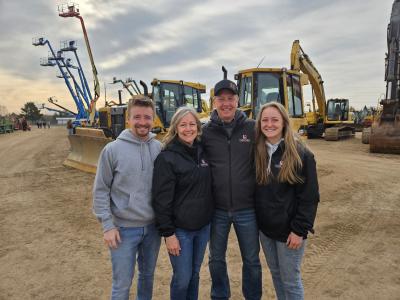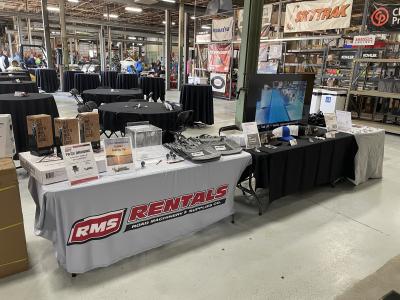PITTSBURGH (AP) At “hot spots” like the SouthSide Works in Pittsburgh and the Waterfront in Homestead, trendy shops, fancy restaurants, entertainment venues, luxury condos and apartments are luring residents and visitors to rambling riverfront developments once populated by fire-spitting blast furnaces and rusting industrial buildings.
The shores of the Monongahela, Allegheny and the Ohio have finally become Meccas for shoppers and diners.
By one estimate, more than $2.5 billion in public and private investment has been spent in riverfront development in and around Downtown in the past decade.
“This is a very happening place,” said Ellen Calig, manager-buyer of Linton’s, an upscale ladies specialty clothing store at the Waterfront. It’s a “cool” location that attracts customers from both inside and outside the Pittsburgh area.
“I’ve never had a day where I regretted the decision we made,” she said of Linton’s move from Squirrel Hill approximately four years ago. “At some of the restaurants during the summer you can sit along the river, and the ambiance is great. It’s been fun, it’s been good.”
Scott Acamando, who works in investment sales, lives in a third-floor loft at the Flats at SouthSide Works said, “I really love it here.”
His apartment is approximately two blocks from the edge of the Monongahela, and Acamando said he enjoys the excitement and energy generated by the riverfront development, with its collection of unique-to-Pittsburgh shops and restaurants.
While local leaders and others pushed for such development on the riverfront for years, progress was slow and expensive.
Experts said environmental remediation at old industrial sites, lack of access and flooding have been impediments. It’s taken approximately three decades since the retrenching of the region’s steel industry began in the late 1970s to develop some sites.
“The lack of development was because heavy industry occupied most of the available flat areas along the riverfront,” said Dennis Davin, executive director of Allegheny County’s Department of Economic Development.
Even with those plants closed, the cost of removing asbestos-laden buildings and cleaning up toxic materials contaminating the land proved either too much for some developers to absorb or too risky for banks to finance, Davin said.
And “It may be five or 10 years before we find affordable housing being built along the riverfronts” without public subsidies, said Davin.
All that hasn’t stopped development of the Chapel Harbor complex along the Allegheny River in O’Hara.
Residential, with some office use, is the main focus of Chapel Harbor, said Gene Zambrano, president of Zambrano Corp., the project’s developer.
“We decided to develop the 42-acre site … as residential instead of retail or industrial because three investors before me tried to develop it as a retail-shopping mall site, but were unable to do so,” he said.
“We looked at the site for high-impact residential because it had a lot of amenities: nearby movies, shopping, country club and the Fox Chapel School District.”
At the site, Lighthouse Pointe, a 134-unit independent living building, is occupied; a 33,000-sq.-ft. medical office building that has been 80 percent pre-leased is scheduled for construction; 33 of 163 townhouse and single-family houses built by Ryan Homes are sold and occupied; and construction has started on the 53-unit Marbella at Chapel Harbor condominium where 30 percent of the units have been pre-sold.
“It’s very nice, especially during the summer, and you can’t beat the view of the sun glistening on the water,” said Ryan Corridoni, a pharmacist, who owns a four-story unit (three stories and a loft) at the Chapel Harbor complex. He moved from Oakmont approximately five months ago.
“It has easy access to everything — you can get Downtown fairly easily and the Pennsylvania Turnpike, and you have all the amenities at your fingertips, including the Waterworks Mall and local restaurants,” he said.
Riverfront projects gained a spark in 1995 with adoption of Act 2, the Pennsylvania Land Recycling Act, said Davin and others.
That legislation required sites to be cleaned according to rules issued by the state Department of Environmental Protection. With state oversight, projects could move forward because developers and banks could finance projects without concern for liability, Davin said.
Over the past 10 years, more than 2,000 cleanup actions have been completed statewide under the program, said David Crownover, section chief of the state program’s Information Section.
“If it wasn’t for this mechanism, many sites would be sitting there unused, because neither lenders nor developers would take them on,” said William E. Burroughs, vice president of project development for the Regional Industrial Development Corp. (RIDC).
Chris and Jane Lacey live in the Lincoln at North Shore apartment complex that overlooks the Allegheny River and the Downtown skyline.
“The view we have of the riverfront, the Allegheny River and of Downtown is fantastic. It’s an incredible view of Downtown. We moved from the Laurel Mountains about a year ago because we wanted to live in the Downtown area. And our location allows us to walk to work and not worry about high gasoline prices,” said Chris, a local assistant executive director of the American Federation of Television and Radio Artists.
Before Act 2 was adopted, the RIDC joined with the city’s Urban Redevelopment Authority in the early 1980s to develop the Pittsburgh Technology Center in South Oakland on a former steel plant site along the Monongahela River.
The 40-acre site, which already has a mix of office and research companies that employ hundreds, now is targeted for an expansion that could add 750,000 to 1.5 million sq. ft. of office space.
Successful riverfront activity in Allegheny County has spurred new thinking for similar projects in Westmoreland County, said Larry Larese, executive director of the Westmoreland County Industrial Development Corp.
One major industrial project has converted a former 90-acre Wheeling-Pittsburgh Steel property along the Monongahela River in Monessen into the Riverfront Industrial Park where Maronda Homes occupies a 340,000-sq.-ft. building to build parts for houses.
Approximately 100 are employed there and another 200 may join the work force once more shifts are started, he said. Another firm, Green Energy, with 80 workers, will soon build a 56,000-sq.-ft. structure.
In New Kensington, discussions are under way with a private developer for a mixed-use complex along the Allegheny River. It will contain housing, commercial and recreational facilities, Larese said.
The URA’s Dettore said he does not remember any major organized opposition to riverfront development in recent years.
Making optimum use of former industrial sites for development is important because it protects pristine “greenfield” areas, said Jacqui Bonomo, vice president of the Western Pennsylvania Conservancy.
Riverfront areas are a habitat for wildlife, and heavy forests along the rivers help keep the waters clean, she said.
“Developers have an opportunity to do both — redevelop sites for retail, industrial and residential uses, but also keep the green ribbon of forest areas along the rivers,” she said.
The Riverlife Task Force, a community group, is trying to help make that happen in Pittsburgh, said Lisa Schroeder, its executive director.
The group is spearheading a plan to develop Three Rivers Park, a 9.5-mi. loop of trails the task force envisions along the city’s shorelines.
“We hear … from all quarters great excitement about the public trail system [along the riverfronts], the new riverfront parks, and the economic development value of riverfront developments of brownfield sites,” she said.
Today's top stories















